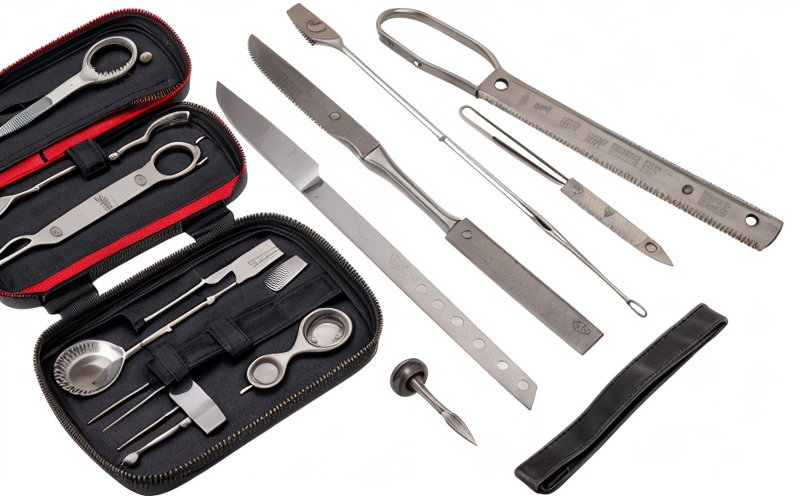Edge Retention Testing of Surgical Cutting Tools
The edge retention testing of surgical cutting tools is a critical procedure in ensuring that medical devices meet stringent safety and performance standards. This test evaluates how well the edges of surgical instruments maintain their sharpness after repeated use, which directly impacts the efficacy and safety of surgical procedures.
Sharpness plays an essential role in minimizing patient discomfort during surgery and reducing the risk of infection. A dull or poorly maintained edge can lead to increased tissue trauma, leading to longer recovery times and potential complications for patients. Therefore, ensuring that these instruments maintain their sharp edges throughout use is paramount.
The testing process involves subjecting surgical cutting tools to a series of cuts in a controlled environment using a standardized specimen. The specimen material mimics human tissues such as skin or fat. After each cut, the edge retention tester measures the depth and width of the cut made by the instrument. This data is then compared against baseline measurements taken before any testing has occurred.
Edge retention testers can also be used to determine how many cuts an instrument can make before its performance falls below acceptable levels. Instruments that fail this test may not meet regulatory requirements or could pose risks during surgical procedures.
This type of testing is particularly important for certain types of surgical instruments like scalpels, scissors, and other tools designed specifically for cutting tissue. It ensures consistent quality across all units produced by manufacturers while also helping to identify potential issues early in the manufacturing process.
By conducting edge retention tests regularly on new designs or batches of products, companies can ensure they are meeting not only internal standards but also external regulations set forth by governing bodies like the FDA (Food and Drug Administration) and ISO (International Organization for Standardization).
Why It Matters
The importance of edge retention testing cannot be overstated when considering patient safety and surgical outcomes. Maintaining a sharp edge on cutting tools is crucial because it directly affects the quality of care provided during surgeries. When instruments are not properly maintained, they can cause unnecessary tissue damage, leading to prolonged healing times or even complications.
For instance, if a scalpel blade becomes dull due to improper storage or excessive use without adequate maintenance, it may tear through tissue more aggressively than intended. This could result in deeper incisions that bleed more profusely and require additional sutures, increasing both the duration of surgery and recovery time for patients.
Additionally, sharp instruments play a vital role in preventing infections. A blunt or damaged edge can create rough surfaces on the cut surface, providing an environment conducive to bacterial growth. By ensuring that surgical tools maintain their sharpness, hospitals and clinics can help reduce post-operative infections and other complications associated with poor instrument maintenance.
From an economic perspective, maintaining high-quality cutting instruments also benefits healthcare providers by reducing waste and lowering replacement costs. Dull or damaged tools often lead to frequent replacements, which increases operational expenses unnecessarily if proper edge retention testing is conducted early in the lifecycle of these products.
Applied Standards
| Standard | Description |
|---|---|
| ISO 13485:2016 | This international standard specifies requirements for designing, developing, producing, installing, and servicing medical devices. It focuses on quality management systems but also includes provisions related to edge retention testing. |
| AAMI TIR47-2013 | Establishes guidelines for the design, development, and production of surgical instruments with emphasis on maintaining sharpness over time. |
| ASTM F2856-19 | Details procedures for evaluating edge retention properties of surgical blades used in orthopedic surgery. It provides specific methods for measuring changes in blade geometry after repeated cutting actions. |
Environmental and Sustainability Contributions
- Eco-friendly packaging materials that minimize waste during shipping and handling.
- Energy-efficient laboratory equipment used to conduct tests, reducing overall carbon footprint.
- Recycling programs for disposable medical supplies after use in testing environments.
- Water conservation practices implemented within the laboratory setting to reduce environmental impact.





